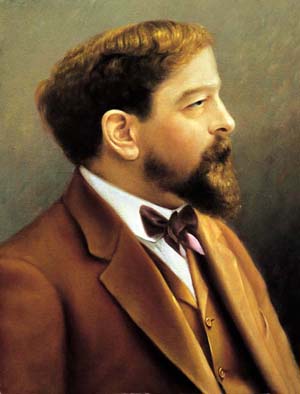Claude Debussy, a prominent figure in the world of classical music, is often regarded as the father of musical impressionism. His innovative approach to composition broke away from traditional harmonic structures, bringing a new sense of color, atmosphere, and expressiveness to music. Below are ten of his most celebrated compositions, each showcasing his unique talent and visionary approach.
1. Clair de Lune (1890-1905)
Perhaps Debussy’s most famous work, “Clair de Lune” is the third movement of his “Suite bergamasque.” This piece captures the essence of moonlight through its delicate, flowing melody and evocative harmonies. Its gentle, dreamlike quality has made it a favorite among pianists and listeners alike.
2. Prélude à l’après-midi d’un faune (1894)
Inspired by Stéphane Mallarmé’s poem, “Prélude à l’après-midi d’un faune” is a symphonic poem that paints a vivid musical picture of a faun’s dreamy afternoon. The piece is known for its lush orchestration and innovative use of chromaticism, making it a landmark in orchestral music.
3. La Mer (1905)
“La Mer” is a three-movement orchestral composition that depicts the sea in all its moods. Debussy masterfully uses orchestral colors to convey the shifting light and movement of the ocean, creating a work that is both powerful and serene. Its movements are “De l’aube à midi sur la mer” (From Dawn to Noon on the Sea), “Jeux de vagues” (Play of the Waves), and “Dialogue du vent et de la mer” (Dialogue of the Wind and the Sea).
4. Arabesque No. 1 (1890)
The first of Debussy’s “Deux Arabesques,” this piece for solo piano is known for its lyrical beauty and intricate, flowing lines. It exemplifies Debussy’s ability to create a sense of fluid motion and grace, making it a staple of the piano repertoire.
5. Images, Book 1 (1905)
“Images, Book 1” is a set of three pieces for solo piano that includes “Reflets dans l’eau” (Reflections in the Water), “Hommage à Rameau” (Homage to Rameau), and “Mouvement.” Each piece is a masterful exploration of color and texture, showcasing Debussy’s impressionistic style at its finest.
6. Préludes, Book 1 (1910)
This collection of twelve piano pieces is one of Debussy’s most significant contributions to the piano repertoire. Each prelude has a descriptive title that hints at its character, such as “La fille aux cheveux de lin” (The Girl with the Flaxen Hair) and “La cathédrale engloutie” (The Sunken Cathedral). The preludes are celebrated for their imaginative use of harmony and texture.
7. Children’s Corner (1908)
Written for his daughter, Claude-Emma, “Children’s Corner” is a suite of six piano pieces that capture the innocence and playfulness of childhood. Highlights include “Doctor Gradus ad Parnassum,” “Jimbo’s Lullaby,” and the famous “Golliwogg’s Cakewalk,” which features a playful syncopated rhythm.
8. Nocturnes (1899)
The “Nocturnes” is a set of three orchestral pieces titled “Nuages” (Clouds), “Fêtes” (Festivals), and “Sirènes” (Sirens). Each piece evokes a different scene, from the drifting clouds in “Nuages” to the lively celebrations in “Fêtes,” and the mesmerizing, otherworldly allure of the sirens in “Sirènes.” The use of orchestral color and texture in these pieces is particularly striking.
9. Suite bergamasque (1890-1905)
In addition to “Clair de Lune,” the “Suite bergamasque” includes three other movements: “Prélude,” “Menuet,” and “Passepied.” Each movement showcases Debussy’s characteristic blend of elegance and innovation, making the suite a beloved work in the piano literature.
10. Pelléas et Mélisande (1902)
Debussy’s only completed opera, “Pelléas et Mélisande,” is a landmark in the operatic repertoire. Based on the play by Maurice Maeterlinck, the opera is notable for its atmospheric music and subtle, impressionistic orchestration. The story’s dreamlike quality is enhanced by Debussy’s innovative use of harmony and texture, creating a work that is both haunting and beautiful.
These ten compositions represent some of the finest examples of Claude Debussy’s genius. Each piece reflects his ability to create vivid musical landscapes, filled with color, nuance, and emotion. Whether through the intimate world of solo piano or the expansive realm of orchestral music, Debussy’s works continue to captivate and inspire audiences around the globe.


Comments are closed